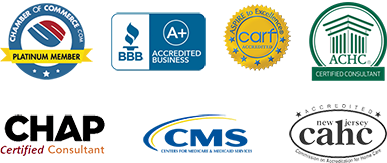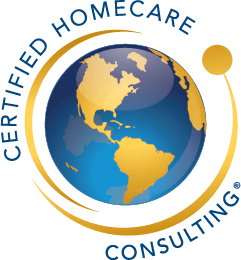Home Health Care Sales and Marketing Plan
How much thought have you put into your home health care sales and marketing plan?

Home Health Care Sales and Marketing Plan
Below is a comprehensive home health care business plan that you can follow to successfully start and grow your home care, home health care, or hospice business. If you have any questions about starting your home care business, please do not hesitate to give us a call.
Executive Summary
Introduction: The home health care industry is at the forefront of an evolving healthcare landscape, driven by demographic shifts, technological advancements, and changing consumer preferences. Our company is poised to enter this growing market with a unique value proposition: offering personalized, technology-enabled, and comprehensive home health care services that prioritize patient well-being and satisfaction.
Mission Statement: To provide compassionate, innovative, and personalized home health care services that improve the quality of life for our clients, while setting new standards in home health care excellence.
Vision: To become the leading provider of home health care services, recognized for our commitment to patient care, technological innovation, and a holistic approach to health and wellness.
Objectives:
- Achieve a steady client acquisition rate of 20% year-over-year.
- Maintain a client retention rate of 95% through exceptional care and service.
- Establish strategic partnerships with healthcare providers and technology firms.
- Become a market leader in integrating technology with home health care.
Market Analysis
Industry Overview: Provide an in-depth analysis of the home health care industry, including market size, growth trends, and key drivers. Highlight the increasing demand for home health care services due to an aging population, the rise in chronic diseases, and a general preference for aging in place.
Target Market: Define specific target segments, focusing on elderly patients with chronic conditions, post-operative patients needing care at home, and individuals requiring long-term care or rehabilitation services. Utilize demographic data, health trends, and psychographic profiles to paint a detailed picture of the target clientele.
Competitor Analysis: Conduct a comprehensive analysis of both direct and indirect competitors. Evaluate their service offerings, market positioning, strengths, and weaknesses. Identify gaps in the market that our business can fill, leveraging unique selling propositions (USPs).
Strategic Plan
Business Model: Outline the business model, emphasizing how value will be delivered to clients and revenue generated. Include detailed descriptions of service offerings, pricing strategies, and cost management.
Key Referral Sources: Develop a strategy to build a robust referral network with hospitals, physicians, senior communities, and rehabilitation centers. Implement a targeted outreach program that includes relationship-building activities, co-marketing agreements, and educational initiatives to drive referrals.
Revenue Streams: Diversify revenue streams by introducing innovative services such as telehealth consultations, wellness programs, and advanced patient monitoring. Explore opportunities for productization, including health care packages and subscription models.
Marketing and Sales Strategy
Brand Positioning: Craft a compelling brand narrative that resonates with the target audience, emphasizing a commitment to quality care, innovation, and patient empowerment. Develop a visual identity that reflects brand values and appeals to the demographic.
Digital Marketing: Implement a multichannel digital marketing strategy, focusing on SEO, content marketing, social media engagement, and targeted online advertising. Utilize analytics to continually refine the approach based on performance data.
Community Engagement: Foster strong community ties through participation in local health fairs, sponsorship of senior activities, and collaboration with community centers. Position the business as a trusted health care partner within the community.
Referral Program: Launch an incentivized referral program for existing clients and professional partners. Design the program to reward referrals with discounts, complimentary services, or other benefits that align with brand values.
Operations Plan
Service Delivery: Develop a detailed operations plan outlining the logistics of how services will be delivered. This includes hiring protocols, training programs for staff, patient intake processes, and quality control measures.
Technology Infrastructure: Invest in a robust technology infrastructure that supports telehealth services, electronic health records (EHR), and mobile applications for both caregivers and patients. Outline the selection criteria for technology partners and platforms.
Compliance and Licensing: Ensure adherence to all regulatory requirements and obtain necessary licenses and certifications. Establish a continuous monitoring system to stay updated with changes in healthcare regulations and standards.
Financial Plan
Startup Costs: Detail the initial investment needed to launch the business, including licensing fees, technology infrastructure, marketing, and initial operating expenses.
Revenue Projections: Provide conservative, realistic, and optimistic projections for revenue over the first three to five years. Include assumptions such as client acquisition rates, average revenue per user (ARPU), and churn rate.
Break-even Analysis: Calculate the break-even point to understand when the business is expected to become profitable. This analysis will inform pricing strategies and operational efficiencies.
Funding Requirements: Specify the amount of funding needed to start and grow the business, including potential sources such as loans, investor capital, or grants. Outline how the funds will be used to achieve business objectives.
Implementation Roadmap
Launch Plan: Develop a phased launch plan that outlines key milestones, including business registration, technology setup, staff hiring, and the official market launch. Assign responsibilities and establish timelines for each phase.
Monitoring and Evaluation: Set up a system for monitoring key performance indicators (KPIs) such as client acquisition rate, retention rate, and net promoter score (NPS). Use this data to continually refine strategy and operations.
Risk Management: Identify potential risks to the business, including market changes, regulatory shifts, and operational challenges. Develop contingency plans for mitigating these risks.
Comprehensive Sales and Marketing Plan
Market Research: Conduct thorough market research to identify trends, customer needs, and competitive landscape. Use this information to inform marketing strategies and product development.
Target Audience: Define the target audience with precision, including demographics, psychographics, and geographic locations. Tailor marketing messages to resonate with each segment.
Brand Development: Create a strong brand identity that reflects the values and mission of the business. This includes logo design, color schemes, and a consistent tone of voice across all marketing materials.
Website and SEO: Develop an optimized website that is user-friendly and informative. Implement SEO best practices to ensure high visibility in search engine results for keywords like “start a home care business,” “home health care,” and “hospice services.”
Content Marketing: Produce high-quality content that addresses the needs and concerns of the target audience. This can include blog posts, case studies, white papers, and video content. Distribute content through various channels to maximize reach.
Social Media Marketing: Establish a strong presence on social media platforms relevant to the target audience. Use these platforms to engage with potential clients, share valuable content, and build a community around the brand.
Email Marketing: Develop an email marketing strategy to nurture leads and maintain relationships with existing clients. Provide valuable information, updates, and promotions through regular email campaigns.
Paid Advertising: Invest in paid advertising to reach a wider audience and drive traffic to the website. This can include Google Ads, social media ads, and sponsored content.
Networking and Partnerships: Build relationships with key stakeholders in the industry, including healthcare providers, insurance companies, and community organizations. Leverage these partnerships to enhance credibility and expand the referral network.
Sales Strategy: Develop a sales strategy that includes clear goals, target metrics, and a defined sales process. Train the sales team to effectively communicate the value proposition and close deals.
Performance Monitoring: Regularly review and analyze marketing and sales performance data. Use this information to make data-driven decisions and continually improve strategies.
By following this comprehensive plan, you can successfully start and grow your home health care business, while also offering services in home care and hospice. Certified Homecare Consulting is here to support you every step of the way, ensuring your success in the home health care industry.

